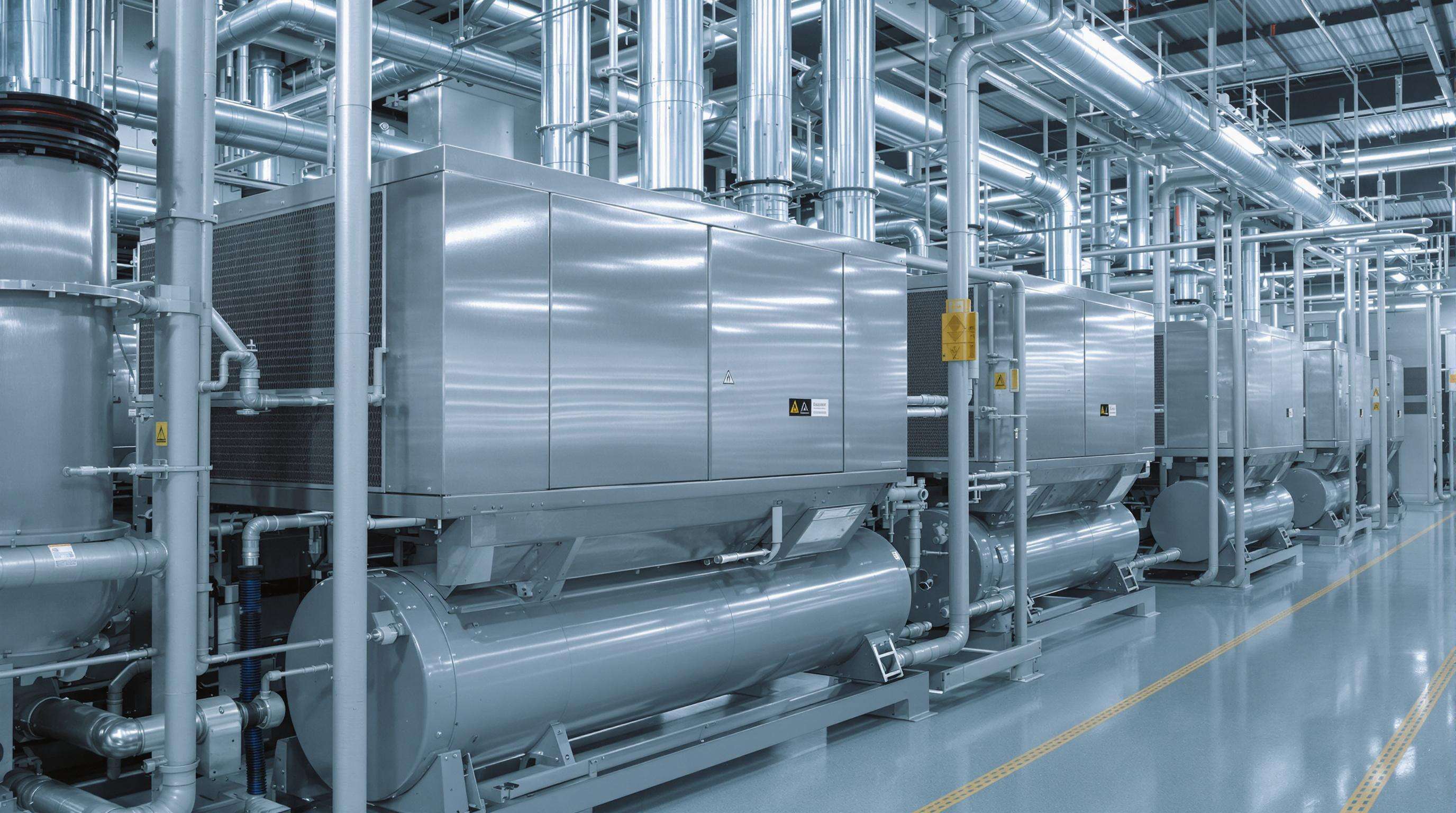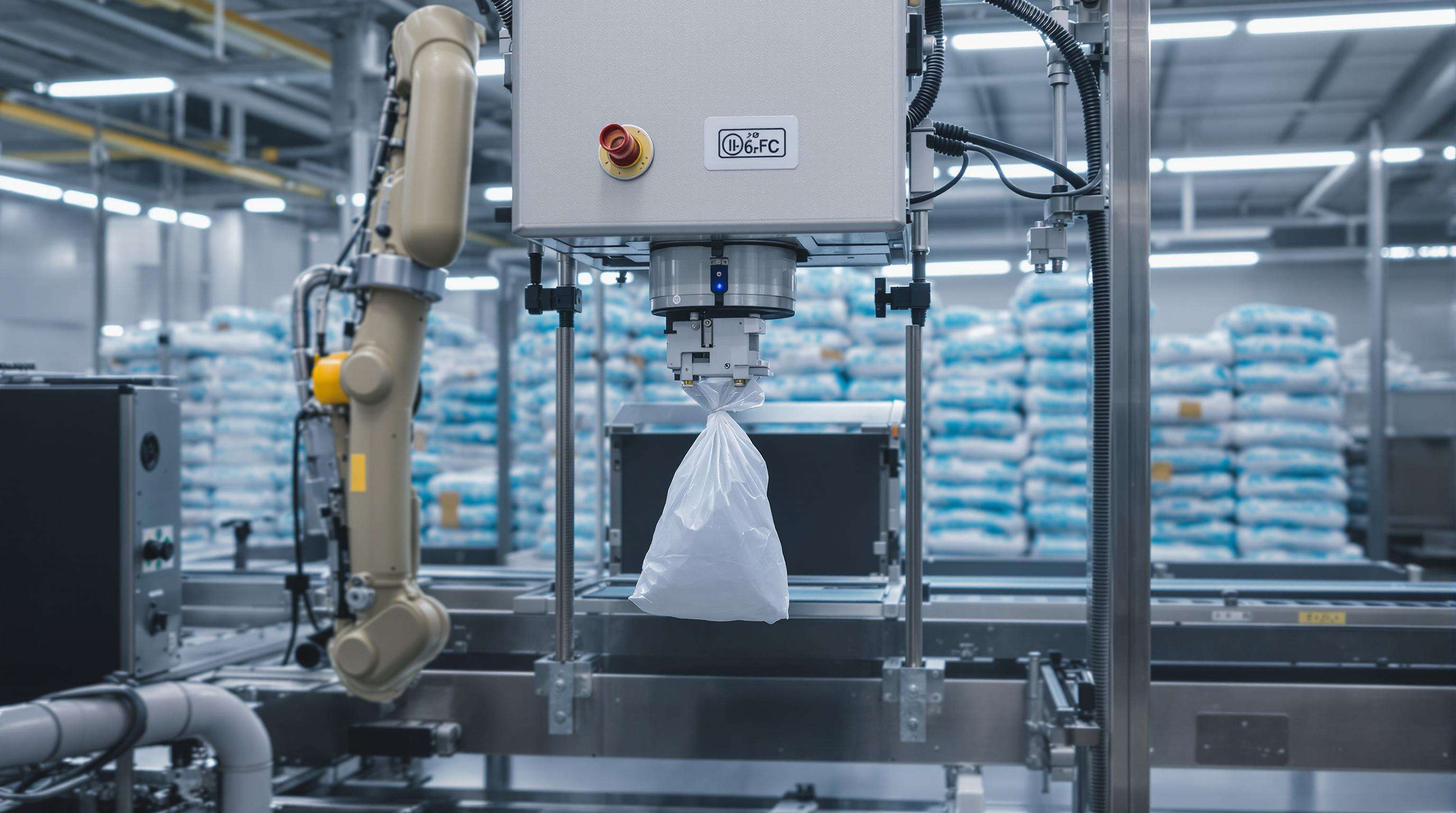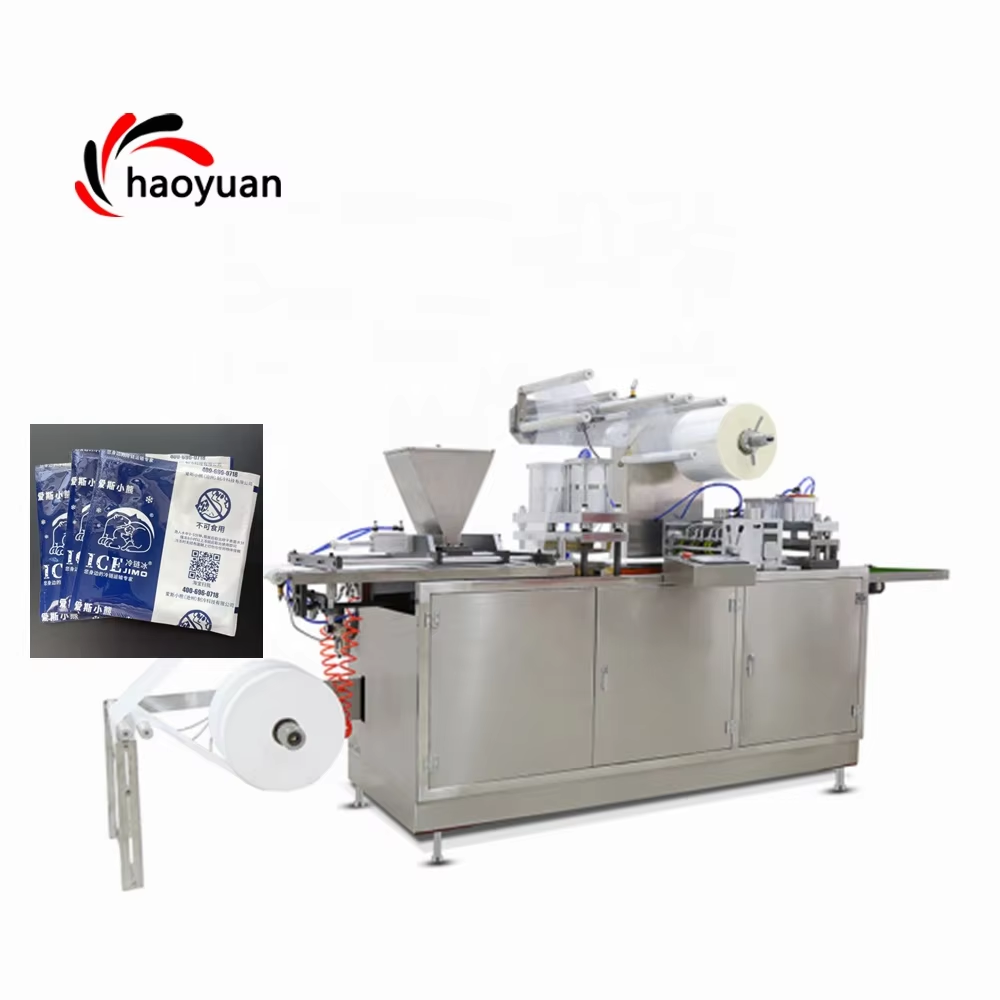Core Functionality in Commercial Ice Production
Ice bag making machines integrate freezing and auto bagging for mass production of ice. These plants purify incoming water, freeze it into consistent cubes or flakes and then transfer the produce with a network of conveyors to the bagging stations. Portion-control technology weighs each batch under sanitary conditions, then confects and heat-seals bags for output consistency hygiene requirements, for supermarkets, restaurants, and conference centers.
Key Components of Modern Ice Bag Making Machine
Refrigeration Systems: The Cooling Backbone

Modern ice bagging machines rely on industrial-grade refrigeration with:
- Scroll compressors for vibration-free operation
- Microchannel condensers with 40% faster heat dissipation
- Direct-expansion evaporators for uniform ice formation
Advanced models use variable-speed technology, reducing energy use by 30% while maintaining production rates during peak loads.
Automated Bagging Mechanisms

Final stage systems deliver precision with:
- Load cell sensors (±5g accuracy)
- Pneumatic bagging arms (120 cycles/minute)
- UV-C sterilization (99.9% microbe elimination)
These integrate with ERP software for inventory tracking while meeting NSF/ANSI 29 hygiene standards at speeds exceeding 1,200 bags/hour.
The Self-Priming Mechanism
Self-priming technology eliminates manual pump startups, reducing water-handling labor by 90%. It's critical for high-demand environments like stadiums where uninterrupted supply affects customer satisfaction.
Vacuum-Assisted Intake
Advanced systems use:
- Dual-stage vacuum pumps (30+ kPa pressure)
- 20-foot water lift capacity
- Automatic priming that prevents airlocks
Energy Efficiency Comparisons
| Operational Phase | Energy Reduction | Impact |
|---|---|---|
| Startup | âÂ45% | Faster readiness |
| Continuous run | 18-22% | Higher kWh efficiency |
These systems save ~$2,400 annually per machine by eliminating auxiliary pumps and optimizing water delivery (ASHRAE 2023).
Operational Workflow
Industrial machines transform water to bagged ice in <20 minutes through:
- Purification - Sediment/RO filtration achieves 99% purity
- Freezing - Microchannel evaporators form clear cubes in 12-18 minutes
- Portioning - Automated load cells measure ±0.5% accuracy
- Packaging - UV sterilization and heat sealing meet HACCP standards
Selection Factors
Capacity Planning
Match throughput to demand:
- 100-1,000+ bags/day options
- 250-bag systems suit 500-customer stores
- Oversizing wastes energy; undersizing causes stockouts
Energy Efficiency
- 18-30 kWh per 100 bags
- ENERGY STAR units save $1,200+/year
- Compare kW ratings to local utility rates
Compliance
- NSF/ANSI 12 & HACCP requirements
- Auto-sanitizing cycles (UV-C/ozone)
- 3-A SSI certification for healthcare use
Maintenance Best Practices
Daily Protocols
- Disinfect contact surfaces with NSF cleaners
- Automated cycles reduce biofilms by 83% vs weekly cleaning
Preventative Replacements
- Sealing gaskets: 6 months
- Conveyor belts: Annually
- Vibration sensors alert to bearing failures 72hrs in advance
Proactive $18 part changes prevent $12k+ downtime losses.
FAQ
What are the energy efficiency benefits of modern ice bagging machines?
Modern ice bagging machines use advanced refrigeration systems and variable-speed technology to reduce energy use by up to 30%, saving approximately ~$2,400 annually per machine.
How do automated bagging mechanisms ensure precision?
Automated bagging mechanisms use load cell sensors, pneumatic bagging arms, and UV-C sterilization to ensure precise bagging with ±5g accuracy, high cycle rates, and microbe elimination.
Why is self-priming technology important in ice bagging machines?
Self-priming technology eliminates the need for manual pump startups, significantly reducing labor and ensuring uninterrupted ice supply in high-demand environments, such as stadiums.
What maintenance practices should be followed for ice bagging machines?
Daily disinfection with NSF cleaners, preventative replacements of parts like sealing gaskets and conveyor belts, and the use of vibration sensors to detect bearing failures are key practices to prevent downtime.
Table of Contents
- Core Functionality in Commercial Ice Production
- Key Components of Modern Ice Bag Making Machine
- Refrigeration Systems: The Cooling Backbone
- Automated Bagging Mechanisms
- The Self-Priming Mechanism
- Vacuum-Assisted Intake
- Energy Efficiency Comparisons
- Operational Workflow
- Selection Factors
- Capacity Planning
- Energy Efficiency
- Compliance
- Maintenance Best Practices
- Daily Protocols
- Preventative Replacements
- FAQ




